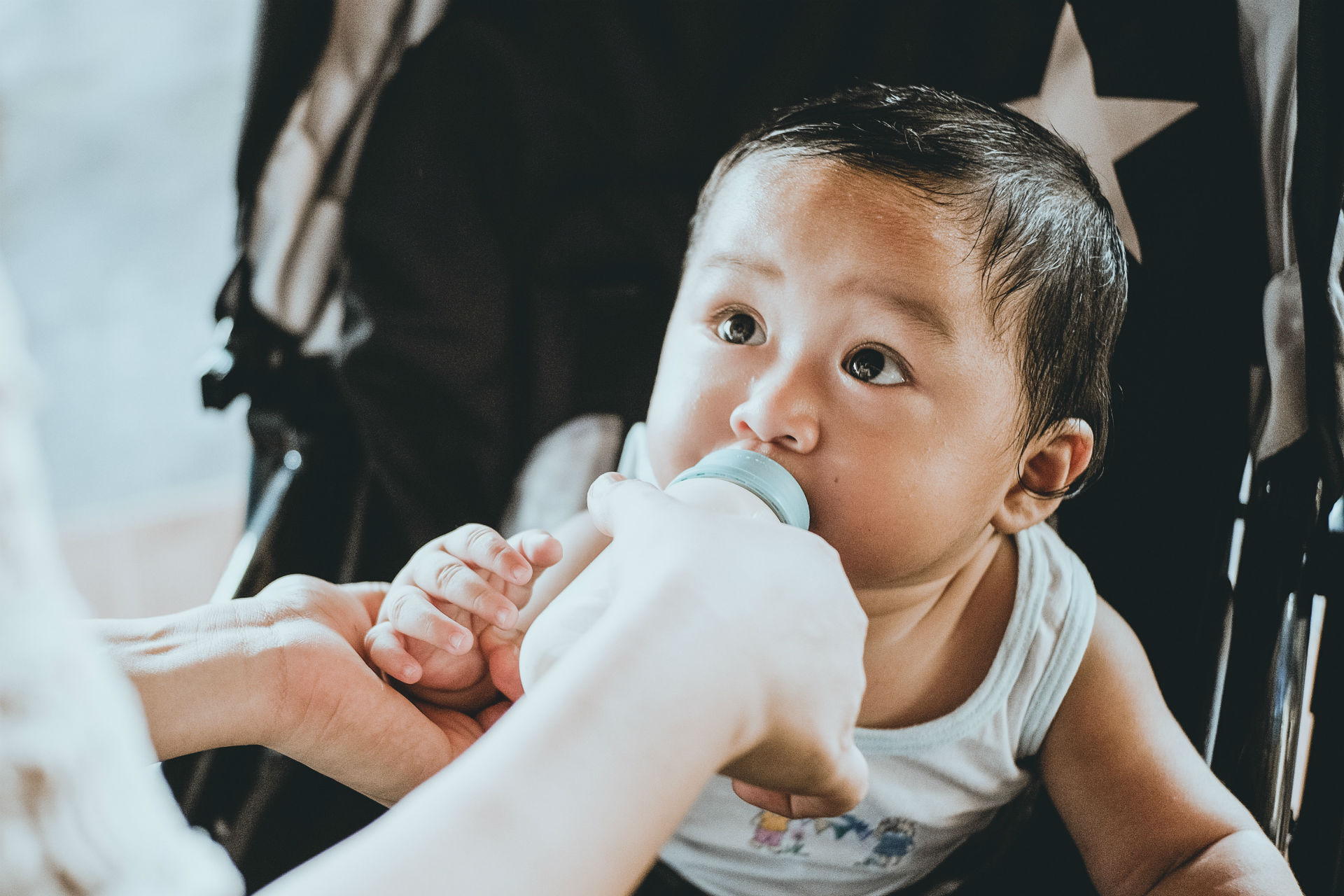For at least the first four months, sterilize the equipment you use to mix your baby’s infant formula.
You will need:
- A large pot with a lid.
- A nipple brush and a bottle brush.
- A set of tongs.
- A can opener.
- A glass measuring cup.
- A knife and fork (if you are using powdered formula).
- Bottles, nipples, caps and rims, if you are using bottles OR bottle holders and disposable liners, rims, caps and nipples if you are using a disposable system. If you use disposable bottle liners, you just need to sterilize the nipple, rims and caps.
How to sterilize the equipment
- Wash your hands with soap.
- Wash all the equipment in warm, soapy water. Use brushes to clean inside bottles and nipples.
- Make sure the holes in the nipples are not clogged.
- Rinse well.
- Put items in a large pot and cover with water.
- Boil for five minutes.
- Remove the items with tongs.
- Set the items on a clean paper towel to cool.
- Depending on the kind of bottles you use, you may be able to buy a sterilization system that sterilizes nipples and bottles in the microwave.
- Throw out bottle nipples when they become soft and sticky.
TIPS for mixing formula
- Wash your hands with soap.
- Check the “use by” date on the can. Do not use after that day. Make sure the cans are clean and have no dents.
- Wash the top of a can of liquid formula before you open it.
- Make sure the countertop is clean and all your equipment has been sterilized.
- Mix the formula, following the directions exactly, and fi ll the bottles. Make sure the bottles are the correct size — about 1 ounce more than your baby usually drinks.
- Make just enough bottles to last one day.
- Refrigerate the bottles.
What about the water used to mix infant formula?
- If you have municipal water supply, use plain water from the cold water tap. Do not use softened water or filtered tap water.
- Well water is fine, as long as you have it tested for bacteria and nitrates. To have your water tested, contact your local public health unit.
- Until your baby is four months old, boil the water for two minutes. If you have an electric kettle that switches off as soon as the water boils, boil the water in a pot. Let the water cool before you add it to powdered formula or liquid concentrate.
- Do not use carbonated water or mineral water for your baby’s formula.
How to store infant formula
- Keep prepared bottles in the refrigerator and use them within 24 hours.
- Open cans of powder should be kept covered with the lid. Use within one month.
- Keep open cans of ready-to-feed or liquid concentrate formula in the refrigerator. Use within 24 hours of opening.
- Do not freeze any kind of infant formula. Freezing changes the fat in formula.
How to warm your baby’s bottle
Put the bottle in a container of hot water for a few minutes, or hold it under warm, running tap water. Test the temperature by putting a few drops on your wrist.
Can I use the microwave oven to warm my baby’s formula?
Warming infant formula or baby food in the microwave can be risky. Microwaves can cause “hot spots” that could burn your baby’s mouth. Some babies have been so seriously scalded that they needed treatment in a hospital. The hot spots can develop even when the bottle feels cool to the touch. Some plastic bottle liners break if their contents become too hot. Therefore, many baby experts recommend against using the microwave oven to warm a baby’s formula.
Some parents choose to use the microwave oven anyway. If you do use your microwave oven to warm your baby’s formula, follow these guidelines:
- Warm the formula to body temperature by heating it only a few seconds at reduced power.
- Shake the formula thoroughly after heating it to even the temperature.
- Check the temperature of the formula before giving it to your baby.
Content from the Canadian Baby and Child Care Encyclopaedia. Originally published in 2011.


















